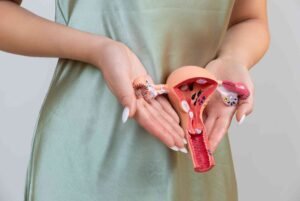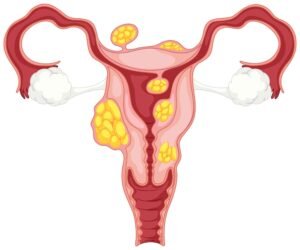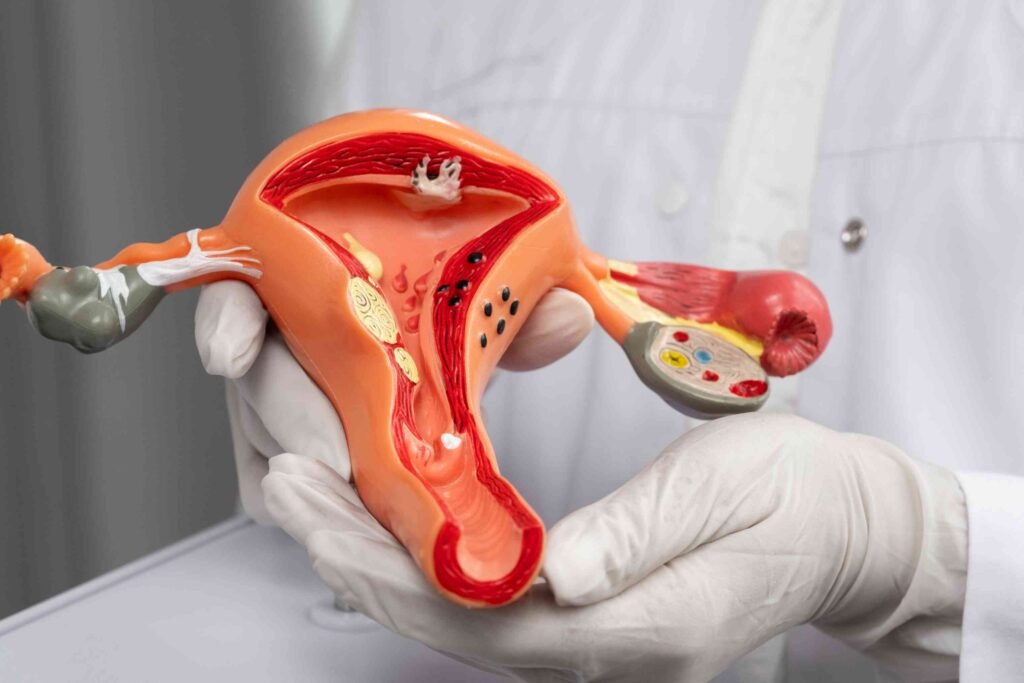How Endometrial Health Affects Implantation Success in IVF?
Let’s face it—when you’re going through IVF (In Vitro Fertilization), every detail matters. From the quality of your eggs and sperm to your hormone levels and even the timing of embryo transfer. But one thing that often flies under the radar until you’re knee-deep in the process? Endometrial health. It’s not the most glamorous topic, but when it comes to the success of implantation, your endometrium (the lining of your uterus) might just be the unsung hero—or the hidden obstacle.
In this blog, we’ll break down everything you need to know about the relationship between endometrial health and successful embryo implantation in IVF. Whether you’re just starting your fertility journey or looking to troubleshoot why previous cycles haven’t worked, understanding your endometrium could be a game-changer.

What Is the Endometrium and Why Does It Matter?
Before we dive into how endometrial health plays a role in IVF success, let’s cover the basics.
The endometrium is the inner lining of the uterus. It goes through changes every month in response to hormonal signals from your ovaries. In a natural cycle, this lining thickens to prepare for a fertilized egg. If no fertilization happens, it sheds during menstruation.
In an IVF cycle, the goal is to get this lining just right—thick enough, receptive enough, and timed perfectly—to allow a transferred embryo to implant and grow. Sounds simple, right? Not quite.
There’s a fine line between a receptive endometrium and one that just isn’t ready. Think of it like planting seeds in a garden. The seed (your embryo) might be healthy, but if the soil (your endometrium) isn’t in good condition, nothing will grow.
The Role of Endometrial Health in Embryo Implantation
You might be surprised to learn that implantation failure in IVF often has less to do with embryo quality and more to do with the uterus. Studies suggest that up to two-thirds of implantation failures may be related to the uterine environment.
So, what makes for a “healthy” endometrium? Here are a few key factors:
- Thickness – An endometrial thickness of 7-14mm is considered ideal for implantation. Anything too thin may not provide the necessary support for the embryo.
- Pattern – A trilaminar (three-layered) pattern seen on ultrasound is typically a good sign of receptivity.
- Blood Flow – Adequate blood supply ensures the endometrium is well-nourished and oxygenated.
- Hormonal Synchronization – The lining must be in sync with the stage of the embryo for implantation to occur. This is known as the “window of implantation.”
- Absence of Inflammation or Infection – Chronic endometritis, undiagnosed infections, or immune issues can significantly impair implantation.

How IVF Impacts the Endometrium
One of the lesser-discussed aspects of IVF is how the medications used can sometimes negatively affect endometrial health.
Here’s how:
- Ovarian stimulation drugs can alter the natural hormonal balance, which may lead to an endometrial lining that’s out of sync with the embryo.
- Elevated estrogen levels might thicken the lining too much, making it less receptive.
- Progesterone supplementation, while necessary, must be carefully timed to avoid disrupting the window of implantation.
Some clinics now opt for “freeze-all” cycles to allow the endometrium to recover from the stimulation phase, transferring embryos in a later cycle where conditions can be more closely managed.
Measuring Endometrial Receptivity: Can We Test for It?
Yes, and this is where things get really interesting.
Technologies like the Endometrial Receptivity Analysis (ERA) test can analyze gene expression in the endometrium to determine the exact window when it’s most receptive. This test helps personalize the timing of embryo transfer, especially in cases of recurrent implantation failure.
Another method is 3D ultrasound with Doppler, which can assess the blood flow and structure of the endometrial lining.
While these tests aren’t foolproof and aren’t needed for every patient, they can be incredibly helpful in specific scenarios—especially when everything else seems to be going well, yet implantation isn’t happening.
Common Conditions That Affect Endometrial Health
So what can go wrong? Unfortunately, quite a few things. Here are some of the most common endometrial issues that can sabotage implantation:
1. Thin Endometrial Lining
Sometimes the endometrium just doesn’t thicken up enough, even with hormonal support. This can be due to:
- Scar tissue from previous surgeries (Asherman’s Syndrome)
- Prolonged use of birth control pills
- Low estrogen levels
- Poor uterine blood flow
2. Endometrial Polyps and Fibroids
These are benign growths in the uterus that can interfere with implantation either by physically obstructing the lining or causing inflammation.

3. Chronic Endometritis
An often silent infection of the endometrium, chronic endometritis has been linked to recurrent implantation failure and miscarriage. It’s treatable with antibiotics once diagnosed.
4. Autoimmune Conditions
Sometimes the body’s immune system mistakenly attacks the endometrium or prevents the embryo from implanting properly.
Lifestyle and Nutritional Factors in Endometrial Health
You knew this was coming—yes, lifestyle plays a role too. While there’s no magic diet to guarantee implantation, here are a few habits that are known to support endometrial health:
- Eat a balanced, anti-inflammatory diet with plenty of fruits, vegetables, whole grains, and healthy fats.
- Stay hydrated—blood flow is key!
- Avoid smoking and excessive alcohol, which impair circulation and hormone levels.
- Consider acupuncture, which some studies suggest may improve blood flow to the uterus.
- Manage stress, as high cortisol levels can interfere with reproductive hormones.
Emotional Toll: The Silent Struggle of Implantation Failure
When IVF doesn’t work, especially after transferring seemingly perfect embryos, the emotional toll is enormous. Many women blame themselves, their eggs, or even “bad luck.” But the endometrium is rarely part of the initial conversation.
Understanding that endometrial health could be the root cause helps reframe the journey—not as a failure, but as a piece of the puzzle yet to be solved. Sometimes, it’s not that the embryo wasn’t viable. It’s that the environment just wasn’t ready.
When to Investigate Further
If you’ve had:
- Multiple failed embryo transfers
- Unexplained infertility
- Recurrent miscarriages
- A history of uterine surgery or infection

The Future of IVF and Endometrial Research
Fertility medicine is advancing rapidly, and the focus is increasingly shifting toward uterine receptivity. Technologies like artificial intelligence, genetic testing, and precision medicine are helping doctors better understand the nuanced role that endometrial health plays in implantation.
One day, we may have fully personalized IVF cycles, where both the embryo and the endometrium are assessed and optimized in tandem, significantly improving outcomes.
Final Thoughts:
You can do everything “right”—take your meds on time, transfer a top-grade embryo, and still not get pregnant. And while that’s an incredibly frustrating reality, it’s also a call to look deeper. Don’t underestimate the role of endometrial health in your IVF journey.
If there’s one takeaway from all this, it’s that the embryo is only half the story. The other half? That’s the home it’s trying to land in.
So whether you’re just starting out or looking to improve your odds in another round of IVF, give your endometrium the attention it deserves. After all, a healthy beginning starts with a welcoming home.



